MARADONA, NAPLES & THE HAND OF GOD
02.12.2021 NAPLES & AROUND
Italian film director Paolo Sorrentino is explaining to me just what the arrival of Argentinian soccer player Diego Armando Maradona meant for Naples in the summer of 1984, when he himself was a soccer-mad 14-year-old. Back then, the southern Italian city’s soccer team, Napoli FC, was more famous for languishing in the lower reaches of the top-flight Serie A league than for signing star players.
“It was incredible that we managed to get him”, Napoli fan Sorrentino told me on the terrace of the Hotel Excelsior in Venice, where his latest feature, The Hand of God, had premiered at the lagoon city’s annual Film Festival a few days earlier. “Cases in which a club that is struggling to avoid relegation manage to sign the world’s best player are very rare. Somebody like Lionel Messi would never have come to play for Napoli”.
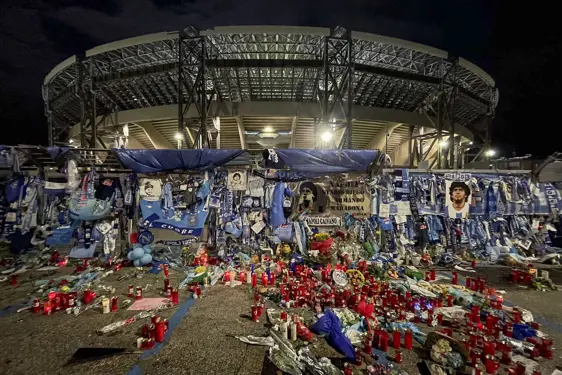
View
Diego Armando Maradona, whose premature and still partly unexplained death just over a year ago is the subject of the new Spotify podcast The Last Days of Maradona, was seen as a kind of messiah in Naples, bringing new energy and confidence to the lowly club and leading it to its first ‘scudetto’ or Serie A title at the end of the 1986-87 season – remarkably, this was the first time any club from southern Italy had managed the feat. Although his career at Napoli ended in disgrace in the early 1990s after he failed a drug test for cocaine and was handed a 15-month ban, the city he had galvanized never forgot Diego. When he died on 25 November 2020, the whole of Naples went into a mourning, and just over a week later, the decision was taken to change the name of the stadium where Napoli play their home matches from Stadio San Paolo to Stadio Diego Armando Maradona.
Sorrentino’s new film, which will be given a limited theatrical release in selected territories before debuting on Netflix on 15 December, takes it title from Maradona’s most celebrated goal, a header which he scored against England in the 1986 World Cup… with a little help from an outstretched hand. Asked afterwards by reporters whether he had used his hand to score, Maradona replied that “it was the hand of God”.
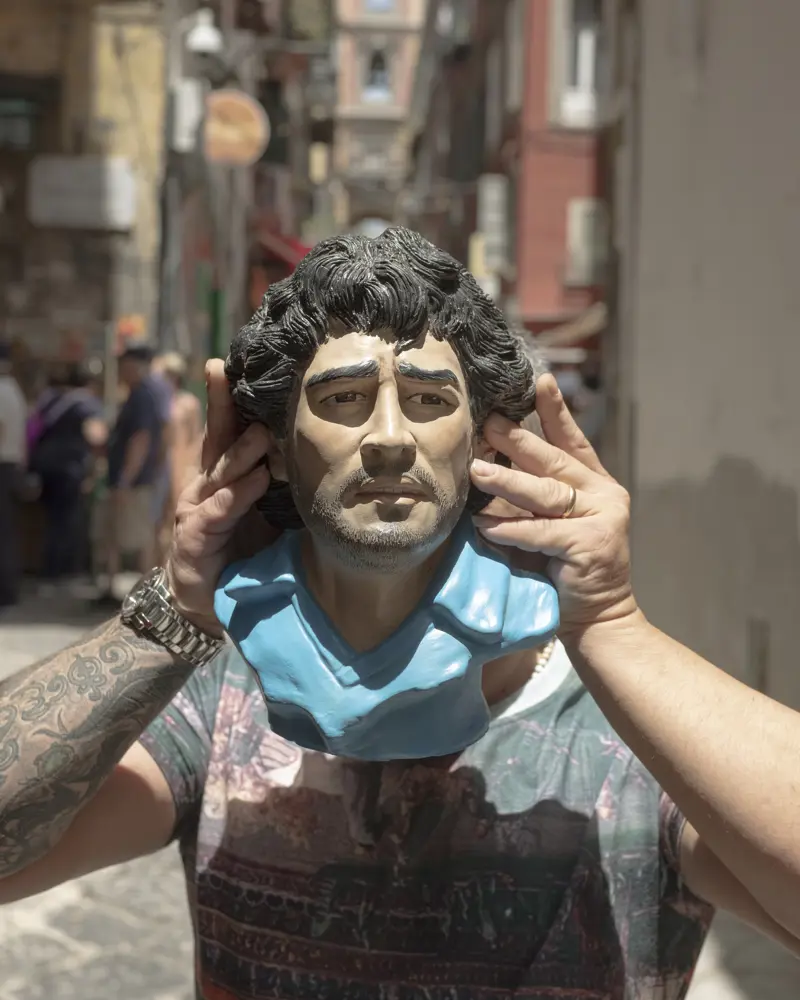
The Hand of God is about much more than Maradona. It’s the most personal movie to date from the director of the Oscar-winning The Great Beauty. It tells the story of a lonely teenager growing up in Naples in the mid 1980s, who after suffering a devastating personal tragedy, decides that what he really wants to do with his life is to make films.
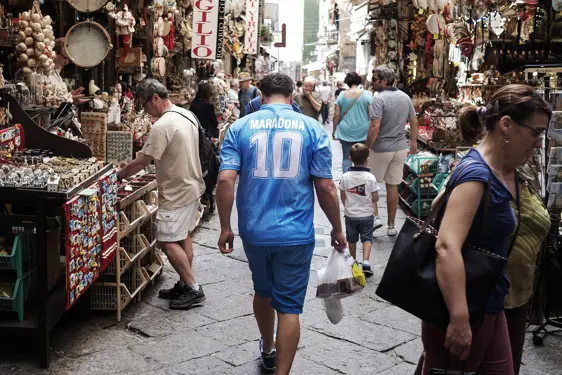
View
Maradona may only be tangential to the story, but the way Naples embraced him and invested his arrival with mystic significance is not. The Hand of God is set in a city where the rational and the spiritual, logic and superstition, magic and mundanity, are constantly tripping each other up. “Due to a series of coincidence or mysterious occurrences, he took on the characteristics of a religious figure”, Sorrentino tells me, “and in city that uses popular beliefs as its cultural compass, that’s an idea that easily catches on. Like our patron saint, San Gennaro, Maradona became famous for performing a miracle”.
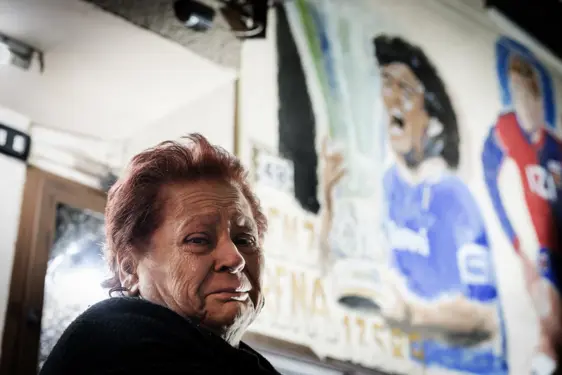
View
The director recounts how the Argentinian soccer star would drive around town in a nondescript utility car, so as not to be recognized, but the effect was only to increase his mythical status as stories circulated about Maradona having been seen behind the wheel of, say, a dented Fiat Panda. And then there was his ‘dramatic arc’, Sorrentino points out: “he was a sinner, he redeemed himself, he was a martyr, he ‘died’, he was resurrected, and then he died a second time”.
Naples’ hero-worship of El Pibe de Oro (‘The Golden Boy’) is enshrined in two famous street-art murals. The first, which can be seen on the wall of an apartment block in the city’s tough Quartieri Spagnoli district, was painted by a young local artist in 1990 to celebrate Napoli’s second Serie A title. It began to fade over the years and in 1998 a window was opened in the wall exactly where the player’s head is. But it was restored in 2017 with the help of an Argentinian street artist, Francisco Bosoletti.
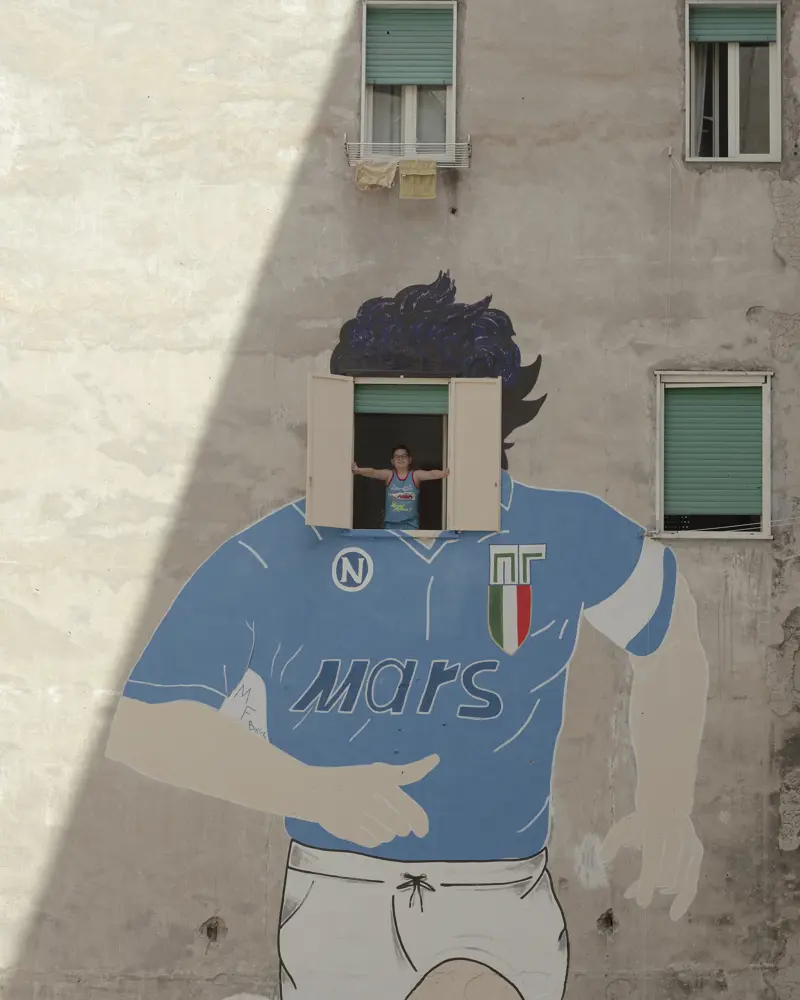
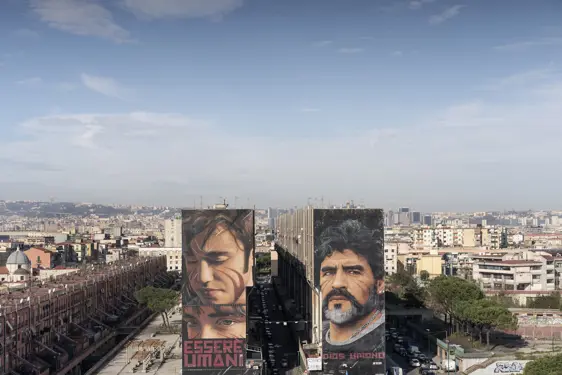
View
The other, much bigger mural is a portrait of the footballer gazing from the end wall of a notorious social housing development in the deprived outer suburb of San Giovanni a Teduccio. Painted in 2017 by a Neapolitan street artist who goes by the name of Jorit, it shows a proud older Maradona, his cheeks marked with the red stripes that are a Jorit trademark – signifying the fact that his subjects, who are more often ordinary Neapolitans than celebrities, all belong to the “human tribe”. A year after completing the Maradona painting, Jorit painted another companion mural on an adjacent wall, this one portraying a scugnizzo or street kid from the district called Nicolò. Below this work, in big red letters, is the phrase ESSERE UMANI – “to be human”. Below the Maradona portrait, Jorit painted the words DIOS UMANO – “a human God”.
The Hand of God is released worldwide by Netflix on 15 December.
Photos © Roberto Salomone
Le Sirenuse Newsletter
Stay up to date
Sign up to our newsletter for regular updates on Amalfi Coast stories, events, recipes and glorious sunsets



